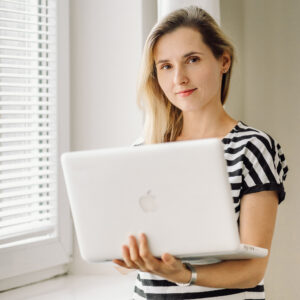Differences Between Headless LMS Solutions
Headless technology can be characterized by three traits: separation of visual (front-end) and content (back-end) layers, simultaneous use of multiple front ends, and API. These three characteristics carry great potential in practical application, including limitless integration possibilities and multichannel access distribution.
Headless technology, introduced to the eLearning world in the form of a headless LMS, also carries immense potential. There are already headless LMS providers out there, each with a totally different offer and possibilities. This is because "headlessness" is a new and not yet fully understood concept, thus it is interpreted by every company differently. The purpose of this article is to gather and analyze the different types of headless LMSs available on the market and explore the options that they give us.
Different Types Of Headless LMSs Available
1. Literally Headless
The first and most obvious advantage of a headless LMS is that there is no one predetermined visual layer, so you don’t have to put up with limited customization options, wondering where to enter your organization’s logo or how to adjust the platform to your company’s colors. Given the wide range of traditional platforms offering front-end customizations, this is one the most common needs on the market—but there is only so far customization can go. No wonder, then, that some LMS providers have decided to help. These helpers are usually well-known, well-established major players on the market, who try to answer clients’ needs. They go about it in three ways:
- Skinnability
Skins are, to quote Wikipedia, "custom graphical appearance preset packages achieved by the use of a graphical user interface (GUI) that can be applied to specific computer software, operating systems, and websites to suit the purpose, topic, or tastes of different users." A skin can give an LMS a total makeover, allowing for a complete change of look and feel. The tricky part about skins in the context of complex systems is, however, that they are version dependent. Every systems update will require a new and updated skin. - Embedment
How to give access to a headless platform without charging for custom-made looks? Some providers decided to go about it in a rather straightforward way: by not giving a front end at all. They allow you to embed a course view onto any website. - Custom front end
These LMS providers allow you to attach a tailor-made or template-based front end to an existing, predefined, back end.
2. Truly Headless
Truly headless LMS platforms are those that:
- Separate visual and content layers
- Use API to connect these layers and create the possibility for the system to communicate per API with literally anything else
- Allow the connecting of multiple front ends
The truly headless LMS systems offer previously unknown possibilities. With multiple front ends and limitless integration possibilities, they allow training via different types of devices, like AR and VR goggles, Smart TVs, HHTs (hand-held terminal) and other touch screen terminals. Some of these have never been used in eLearning before and open up new types of work and places for eLearning.
With tailor-made front end and unabridged integration possibilities, these headless LMSs can be seamlessly connected to any existing system, platform, or application. This means that any piece of software may be enriched by a training module that will be indistinguishable from the rest of the system.
3. Headless Of The Future
The LMS providers in this category are the real technological trailblazers. Not only do they offer the full spectrum of possibilities from the category described above, but they also create their solutions based on the latest technological developments. The difference between this category and the one described above is the cherry on the cake. The headless features are all there, but it’s the extras that make the difference. What are these?
- Modern architecture
Light weight, thus fast. Secure, with the latest safety standards implemented. The ecosystem may be based on the MACH approach: microservices-based, API-first, cloud-native SaaS, and headless. - Back-end customization
While some solutions do allow changes in the back end, what if you could literally decide what features your back end should include? This means that the same LMS can be implemented for internal use only, or as a course marketplace, knowledge management system, social learning platform, all of these and topped with different gamification mechanisms. - New devices
While headless LMSs guarantee full responsiveness for the holy trinity of eLearning (desktops, tablets, and mobiles), there are solutions exploring the possibility of offering training on less traditional devices, like Smart TVs, AR and VR goggles, hand-held terminals, and smartphones. - New file formats
Unparalleled device support calls for new file formats that will allow training content to be used from different devices with the same quality. - In-built content editors
These new formats require authoring tools. An in-built editor, instantaneously creating content, looks like a natural choice. - Converter
Should the extra devices and new file formats fall short of your expectations, it’s good to have an alternative. The definite advantage of SCORM files is that they are easily moved between different platforms. This cannot always be said about prototype solutions. So, it is always worth asking about migration to another platform. A converter might be an option.
Conclusion
Headless technology has only just entered the eLearning world, but it is quickly spreading. There is no one binding definition of a headless LMS platform, which makes observing and comparing different providers additionally exciting. In the coming years, the final understanding of the term "headless LMS" will probably be shaped by market demand. The more widespread the market education on headless technology will be, the more advanced the solutions that will be in demand.






![eLearning Industry's Guest Author Article Showcase [January 2023]](https://cdn.elearningindustry.com/wp-content/uploads/2023/01/Shutterstock_1536652553-1.jpg)

